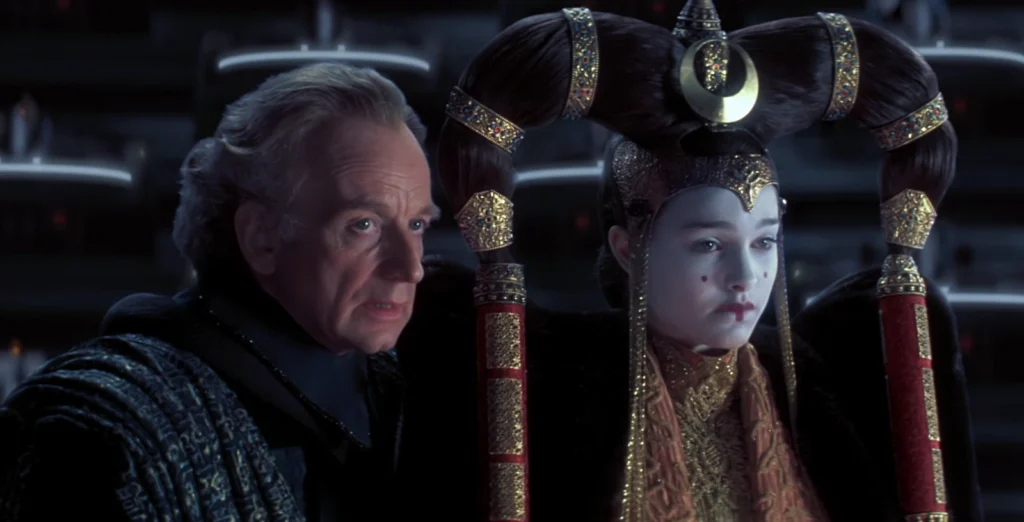After thirteen years, Star Wars finally clarified the meaning behind the title of Star Wars: Episode I: The Phantom Menace.

Understanding “The Phantom Menace” in Star Wars: Episode I A Deeper Dive into Its Significance
When Star Wars: Episode I – The Phantom Menace premiered in 1999, the title immediately sparked curiosity and debate among fans. Who exactly was this “phantom menace”? At first glance, many assumed it referred to the shadowy and mysterious figure of Senator Palpatine, who later becomes the Emperor. However, as time went on and the Star Wars universe expanded, it became clear that the title had a far more complex and layered meaning than initially thought.
The Initial Assumption: Palpatine as the Phantom Menace
From the outset, it seemed logical to identify Palpatine as the “phantom menace.” In Episode I, Palpatine is portrayed as a cunning and manipulative political figure, hiding his true identity as Darth Sidious, the Dark Lord of the Sith. His dual role as both a seemingly benign politician and a malevolent Sith Lord made him the perfect embodiment of a hidden threat—a menace lurking in the shadows, unseen and unknown to the galaxy at large.

Throughout the film, Palpatine carefully orchestrates events from behind the scenes. He manipulates the Trade Federation into blockading Naboo, which sets off a chain of events that ultimately leads to his election as Chancellor of the Republic. This secretive manipulation aligns well with the concept of a “phantom menace,” making Palpatine an obvious candidate for the title.
A Broader Interpretation: The Star Wars Expanded Universe (Legends)
However, the Star Wars Expanded Universe (now known as “Legends”) offers a more comprehensive explanation of the term “phantom menace.” In particular, James Luceno’s 2012 novel Darth Plagueis delves deeper into the meaning behind the title. The novel, which was written in close collaboration with George Lucas, provides insights into the Sith’s evolution and their shift in strategy following their near-extinction during the Ruusan campaign.
According to Darth Plagueis, the phrase “phantom menace” extends beyond Palpatine alone. It refers to the broader strategy employed by the Sith after their defeat at the hands of the Jedi during the Ruusan conflict. Darth Tenebrous, the Sith Master of Darth Plagueis, uses the term to describe the Sith’s new approach to power—a strategy that relies on stealth, manipulation, and operating from the shadows rather than direct confrontation.
This shift in tactics marked a significant departure from the Sith’s previous methods, where they openly wielded their power and engaged in large-scale battles against the Jedi. After Ruusan, the Sith recognized the need for a more covert approach. They became “phantoms,” using deception and secrecy as their primary weapons. This transformation is embodied in their adoption of cloaks instead of armor, symbolizing their new role as unseen manipulators rather than overt warriors.

Darth Plagueis and the Origins of the Phantom Menace
In Darth Plagueis, we see how this new Sith philosophy plays out through the character of Palpatine. As the apprentice of Darth Plagueis, Palpatine is trained in the ways of the Sith, learning to manipulate the galaxy’s political landscape from behind the scenes. His actions in Episode I reflect this training—he is the ultimate “phantom menace,” pulling the strings without revealing his true identity or intentions.
Palpatine’s rise to power is a direct result of this Sith strategy. By remaining hidden and allowing others to act as his proxies, he is able to gradually erode the foundations of the Republic and set the stage for his eventual takeover. His manipulation of the Trade Federation, the Senate, and even the Jedi Council demonstrates his mastery of the Sith’s new approach to power—a method that relies on subtlety and deception rather than brute force.
The Acolyte and the Sith’s Dark Legacy
The significance of the title “The Phantom Menace” is further explored in the new canon series The Acolyte, which provides a unique perspective on the Sith’s dark history. The tagline “before the Menace” emphasizes the long-standing and clandestine threat posed by the Sith, even before the rise of Palpatine. While figures like Darth Bane and his followers were serious threats to the Jedi and the Republic, it is Palpatine who ultimately emerges as the most important and dangerous adversary in the Star Wars saga.
The Acolyte sheds light on the Sith’s history, revealing how their methods evolved over time and how they managed to survive in the shadows for centuries. This deeper understanding of the Sith’s tactics and philosophy adds another layer of meaning to the title “The Phantom Menace,” underscoring the Sith’s role as an ever-present but hidden danger to the galaxy.
Palpatine: The Ultimate Phantom Menace
Across both the Expanded Universe and the new canon, one thing is clear: Palpatine, with his skillful manipulation and hidden objectives, is the saga’s true “phantom menace.” In The Phantom Menace, he orchestrates events from behind the scenes, influencing key players and shaping outcomes to suit his grand plans. His ability to remain hidden while exerting such a profound influence over the galaxy is what makes him the ultimate threat.
Palpatine’s subtle yet far-reaching impact on the events of Episode I emphasizes his status as the principal antagonist of the Star Wars saga. He is the mastermind behind the galaxy’s descent into darkness, and his schemes drive the plot forward, demonstrating the extent of his diabolical cunning.
The title “The Phantom Menace” serves as a perfect encapsulation of Palpatine’s role in the Star Wars universe. It represents not just a single character, but the entire Sith philosophy of stealth, deception, and hidden power. As the saga unfolds, Palpatine’s true nature is gradually revealed, but in Episode I, he remains the unseen force behind the chaos—a true phantom menace whose influence will shape the fate of the galaxy for years to come.

Conclusion: The Lasting Impact of “The Phantom Menace”
The title “The Phantom Menace” carries with it a wealth of meaning, far beyond what was initially apparent. It not only refers to Palpatine’s secretive and manipulative character but also to the broader Sith strategy of operating from the shadows. As the Star Wars universe continues to expand, both in canon and in legends, the significance of this title becomes even more profound, reminding us of the dark forces that shape the galaxy and the hidden threats that lie just beneath the surface. Palpatine’s legacy as the ultimate “phantom menace” is a testament to the enduring power of subtlety and deception in the Star Wars saga.
Stay tuned to Club4Celebs for more updates.


